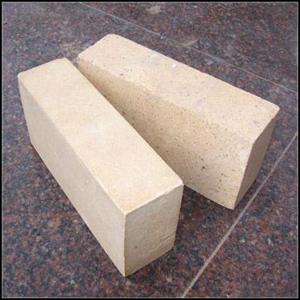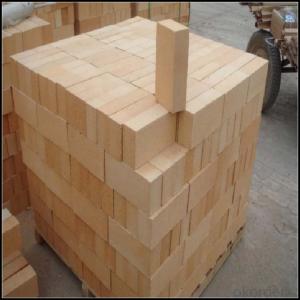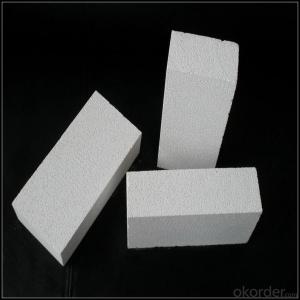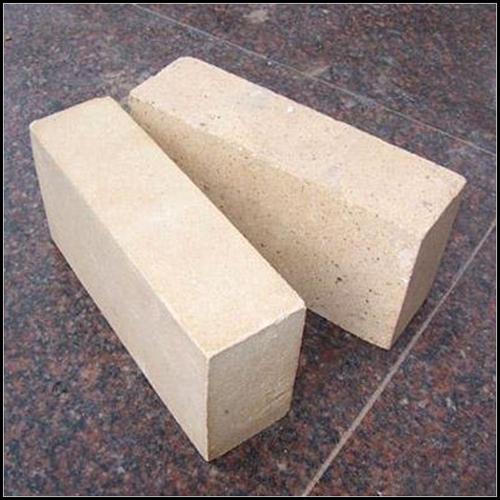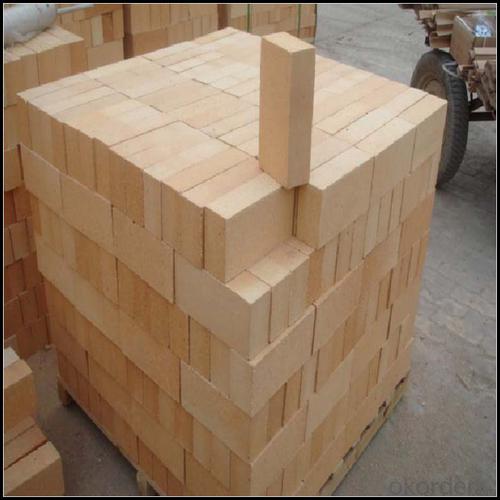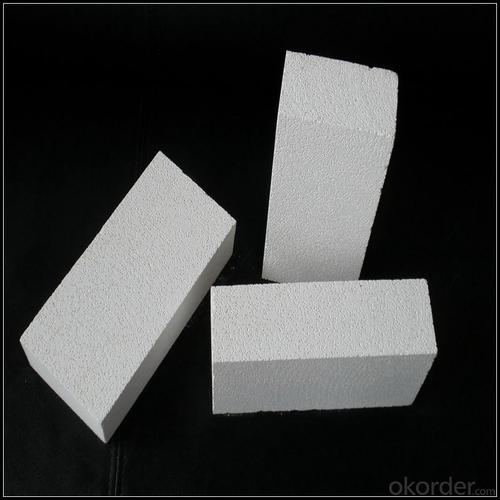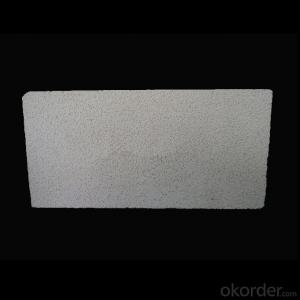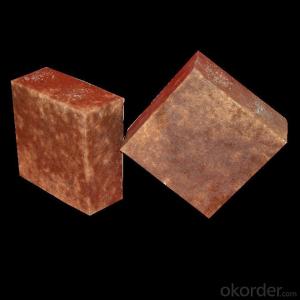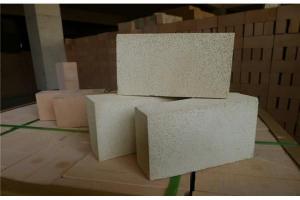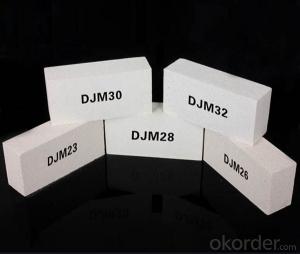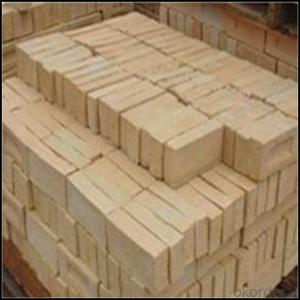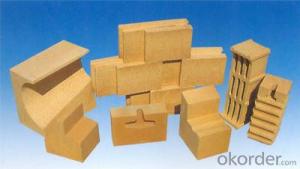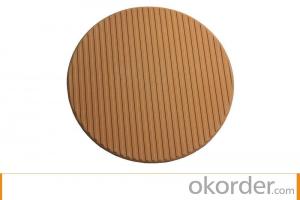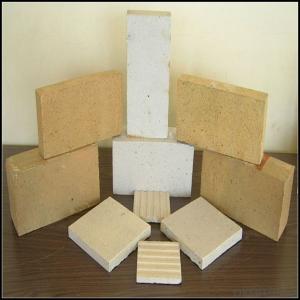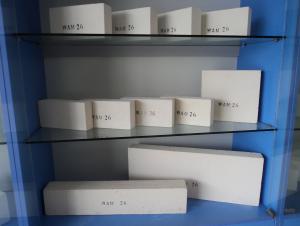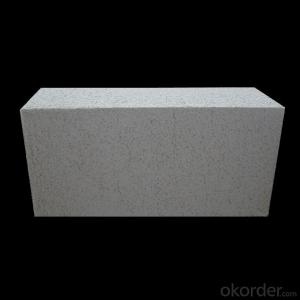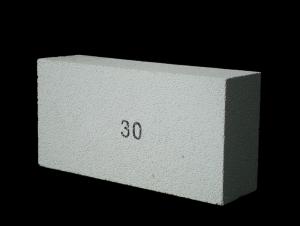Insulating Fire Brick High Alumina Brick for Pizza Oven
- Loading Port:
- China main port
- Payment Terms:
- TT OR LC
- Min Order Qty:
- 2 m.t
- Supply Capability:
- 1000 m.t/month
OKorder Service Pledge
OKorder Financial Service
You Might Also Like
Refractory Brick
CMAX firebricks are classified under temperature between 1300℃ to 1700℃, manufactured from high purity alumina clay by mixing, press-forming, drying, sintering and machining. Bricks contain carefully-graded organic fillers which are burned out during sintering to give a uniform controllable pore structure. This technique makes product feature low thermal conductivity and excellent heat insulation
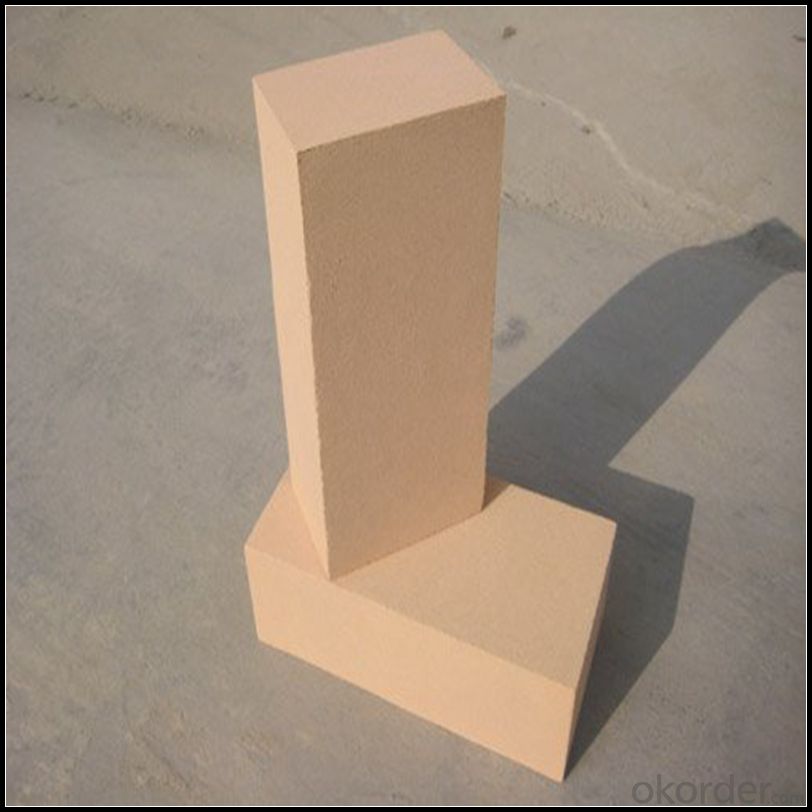
Features
Fireclay refractory brick is a main species of Aluminum silicate product, which adopt clay clinker as raw material, fireclay as bonding agent, the Al2O3 content from 30%~48%.
The refractoriness of Fireclay refractory brick from 1580 to 1770℃, which vary with the ratio of Al2O3 and SiO2
The fireclay refractory brick is faintly acid, whose acidity increasing with the content of SiO2 increasing, which has a certain resist erosion ability against acid slag.
Application
Normally used for Acidic slag furnace Lining, which is common refractory material of Blast furnace, Blast stove, Power boiler, Heating furnace, Rotary kiln, Ceramic and refractory material burning kiln.
Data Sheet
Classification Temperature (℉/℃) | 3000/1650 |
Bulk Density (g/cm3 ) | ≤1.0 |
Thermal Conductivity | |
800℃, W/m.K | ≤0.39 |
1000℃, W/m.K | ≤0.43 |
1200℃, W/m.K | ≤0.48 |
Reheating Linear Change (%) | 1550℃×12h |
≤0.9 | |
Chemical Composition (%) | |
Al2O3 | ≥75 |
Fe2O3 | ≤0.5 |
Packaging & Shipping
Packaging Details:Be packed in fumigated wooden pallets
Delivery Detail: 30 days after order

Our Services
Optimum solution and product supply of refractories for high temperature industries, such as iron steel, non-ferrous, petrochemical and building materials.
Engineering design, contract and consult for refractories, and civil architecture design.
Research, development, manufacture and sale of superhard materials.
R&D, manufacture and sale of special packing materials for export.
Inspection, supervision and arbitration of refractories.
Consultation and services in refractories information.
Training and cultivation of high-level talents in refractories profession
Sales Network

Company Information
CNBM (China National Building Material) Group is the largest comprehensive building materials group in China that in integrate scientific research, manufacturing and logistics into one entity. The largest building materials and equipment specialists in China. Upon State Council approval, today CNBM owned more than 300 subordinate manufacturing factories and servicing companies. There are 6 fully owned public listed companies and 11 partially owned with substantial shares public listed companies. In many of these fields, CNBM is playing the leading role in the building industry in the country.
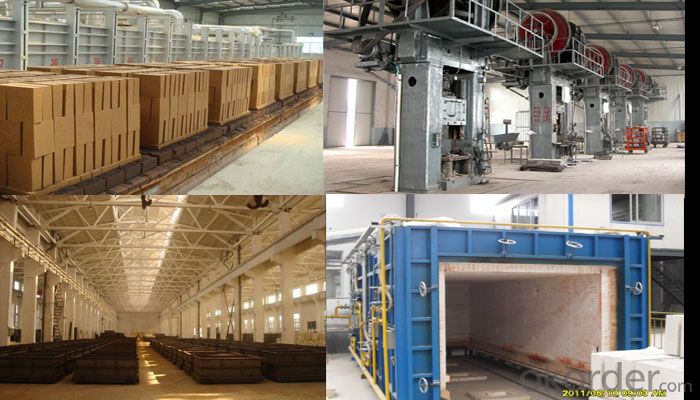
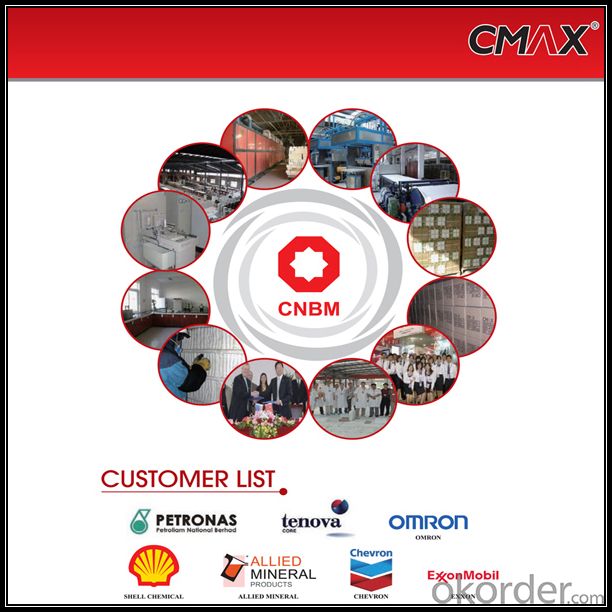
FAQ
1. Which products do you have?
We have all kinds of refractory brick, castable, mortar, cement, ceramic fiber products, etc.
Or you could browse our products to choose what you need.
2. Can you give me a brief introduction of the application of your products?
We are mainly specializing in the refractory materials in iron and steel, cement, glass, ceramics, petrochemical, electric power Industry, etc.
3. If I need your offer, what information do you need?
In order to choose suitable products, it will be appreciated to provide us the information, such us specification, technical data, order quantity, products application etc. If any question, please contact us freely.
- Q: Can insulating fire bricks be used in the construction of glassware production furnaces?
- Yes, insulating fire bricks can be used in the construction of glassware production furnaces. Insulating fire bricks are designed to have low thermal conductivity, which means they are able to withstand high temperatures while providing effective insulation. This makes them ideal for use in furnaces where glassware production takes place, as they help to retain heat and minimize energy loss. Additionally, insulating fire bricks are resistant to thermal shock, which is important in glassware production where rapid temperature changes can occur. Overall, the use of insulating fire bricks in the construction of glassware production furnaces helps to ensure efficient and safe operation of the equipment.
- Q: Can insulating fire bricks be recycled or reused?
- Yes, insulating fire bricks can be recycled or reused. Insulating fire bricks are made from various materials such as alumina, silica, and clay, which can be broken down and reused in the production of new bricks. Recycling these bricks involves crushing them into a fine powder and then mixing it with other raw materials to create new bricks. Reusing insulating fire bricks is also possible in certain applications. For example, if the bricks are still in good condition and have not been damaged, they can be removed from one structure and used in another. This reduces waste and saves resources. Overall, whether through recycling or reusing, insulating fire bricks can have a second life and contribute to a more sustainable and environmentally-friendly construction industry.
- Q: Is it necessary to abolish the technical regulations for the construction of self thermal insulation masonry building with sludge sintering insulation bricks?
- Silt sintering brick insulation brick is made from river mud, city sludge, mud as the main raw materials, added according to a certain proportion of siliceous inorganic binder after aging, extrusion blank, blank by cutting, drying, sintering and extrusion molding machine. The utility model has the advantages of energy saving, resource saving, favorable for developing circular economy and comprehensive utilization of resources, high micropore rate, good product heat insulation performance and heat insulation performance, etc..
- Q: Can insulating fire bricks be used in ladles?
- Yes, insulating fire bricks can be used in ladles.
- Q: Do insulating fire bricks have a high insulation efficiency?
- Yes, insulating fire bricks have a high insulation efficiency. Due to their low thermal conductivity and high heat resistance, they effectively prevent the transfer of heat, thereby providing excellent insulation.
- Q: How do insulating fire bricks help improve the efficiency of heating systems?
- Insulating fire bricks help improve the efficiency of heating systems by reducing heat loss. These bricks are designed to have low thermal conductivity, which means they can effectively trap and retain heat within the heating system. By minimizing heat loss, insulating fire bricks help the heating system operate more efficiently, requiring less energy to maintain the desired temperature.
- Q: Can insulating fire bricks be used in the construction of glass slump molds?
- Yes, insulating fire bricks can be used in the construction of glass slump molds. These bricks are designed to withstand high temperatures and provide excellent insulation, making them suitable for use in kilns and other heat-intensive applications like glass slumping. Their insulating properties help to maintain a consistent temperature during the slumping process, ensuring the glass molds are formed correctly.
- Q: How thick should the insulation layer be when using insulating fire bricks?
- The thickness of the insulation layer when using insulating fire bricks depends on the specific application and desired level of insulation. However, a common recommendation is to have a minimum insulation layer thickness of at least 2 inches (5 centimeters) to effectively reduce heat transfer and provide adequate thermal insulation.
- Q: Do insulating fire bricks require any special curing or firing temperature profiles?
- Yes, insulating fire bricks do require special curing and firing temperature profiles. Insulating fire bricks are made from lightweight materials such as perlite, vermiculite, or alumina silicate, which have high insulating properties. These bricks are designed to withstand high temperatures and provide excellent thermal insulation. During the manufacturing process, insulating fire bricks go through a curing process to remove any moisture content. This is typically done by gradually increasing the temperature in a controlled manner. The curing process is important to prevent any cracking or damage that could occur if the bricks were exposed to high temperatures too quickly. In terms of firing temperature profiles, insulating fire bricks require careful consideration. They are designed to be used in applications where temperatures reach up to 2800°F (1538°C). Therefore, it is crucial to follow the recommended firing temperature profiles provided by the manufacturer. The firing temperature profile typically involves a gradual increase in temperature to allow the insulating fire bricks to reach the desired maximum temperature without causing any thermal shock or damage. This slow heating process ensures that the bricks are properly cured and can withstand the extreme temperatures they will be exposed to during use. It is important to note that the specific curing and firing temperature profiles may vary depending on the type and composition of the insulating fire bricks. Therefore, it is essential to refer to the manufacturer's guidelines and recommendations to ensure the proper curing and firing process for the specific type of insulating fire bricks being used.
- Q: Can insulating fire bricks be used in the construction of flue liners?
- Flue liners can indeed incorporate insulating fire bricks. These bricks are specifically designed to endure high temperatures and offer exceptional insulation qualities. They are produced using lightweight materials like vermiculite or perlite, which possess minimal thermal conductivity. As a result, they are well-suited for lining flues as they effectively retain heat and enhance the flue system's efficiency. Moreover, insulating fire bricks exhibit resistance to thermal shock and can withstand sudden changes in temperature, a crucial factor in flue applications where temperatures may vary significantly. In conclusion, the use of insulating fire bricks in flue liner construction greatly enhances the flue system's performance and safety.
Send your message to us
Insulating Fire Brick High Alumina Brick for Pizza Oven
- Loading Port:
- China main port
- Payment Terms:
- TT OR LC
- Min Order Qty:
- 2 m.t
- Supply Capability:
- 1000 m.t/month
OKorder Service Pledge
OKorder Financial Service
Similar products
Hot products
Hot Searches
Related keywords
